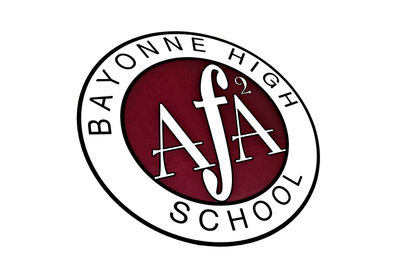With its year-old Academy for Fine Arts and Academics, Bayonne High School has taken the notion of interdisciplinary studies and team teaching to a new level.
The program has four tracks: Arts, Humanities, Scholars and STEM (Science, Technology, Engineering, and Mathematics.) Laura Craig, program coordinator for the academy, calls the program STEAM. (A is for Arts.)
Most artsy adults can remember excelling at writing, music, art, or acting, only to be shot down in history class, trying to sort out all the King Henrys who sat on the British throne.
The STEAM program goes a long way toward solving this problem. If a bad history student is isolated in a history class, it may look to the teacher and fellow classmates as if that student is not very bright. But if the student is a brilliant dancer, and history and dance are taught together, up goes the confidence level and sense of self esteem—two things that are essential to learning.
Dance teacher Kelli McGovern says that academy students got a perfect score in a New Jersey High School dance competition. But the dance studio is also a place to enhance history skills. “If a student is not gifted, they can contribute through their talents,” says Craig, who cites the academy’s cross-curricular activity between 10th and 11th grade history and dance in which students can learn such things as traditional slave dances and the Charleston, representing various eras in U.S. history.
Academy learning is part of a national movement that acknowledges that one size does not fit all, according to Craig.
Mary Ellen Fitzhenry, who teaches 9th grade world history, says students love the collaboration. “They contribute to discussions and brain-storming sessions,” she says. “They like the close proximity, and it’s exciting being part of a group.”
Biology teacher Alexander Kuziola is looking forward to next year when the new biodome will be ready. He describes it as a “living laboratory,” noting that biology often focuses on what’s invisible, like cells and DNA. The biodome will also focus on the big picture, including plant life, fish, small mammals, and reptiles. These guys will actually be in the lab like a kind of petting zoo. (If petting reptiles is your thing).
Engineering teacher Marie Aloia says there is a lot of interest in her discipline. “Students who participate are way more likely to get into a good engineering school,” she says. Engineering students from BHS have gone on to study at Stevens, NJIT, Rutgers, Pratt, and two were even accepted at MIT, considered the crème de la crème.
Aloia looks forward to next year when the STEM track will embrace all grades. Classes will include pre-engineering, robotics, 3D modeling, and science/engineering projects for competitions. She hopes to “interface” with the new biodome and share a unit with the history department.
“We’ve had a wonderful first year,” Craig says. “Next year will be even more exciting when we expand engineering and biology.”—Kate Rounds
EDUCATION BLPHistory and Dance?
